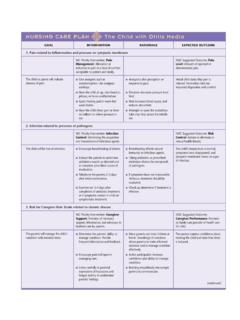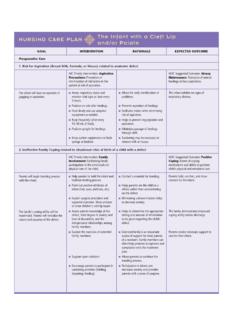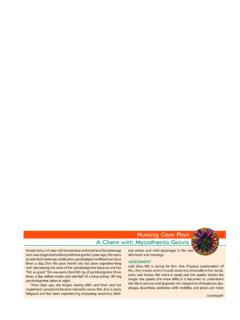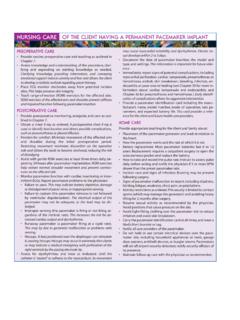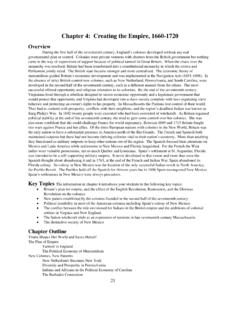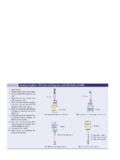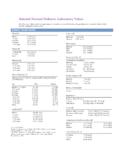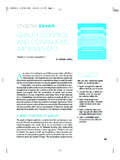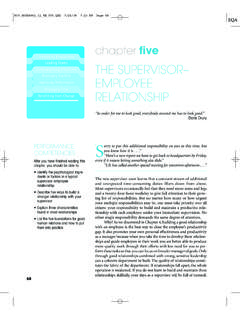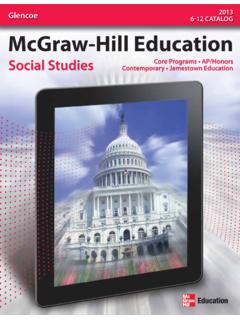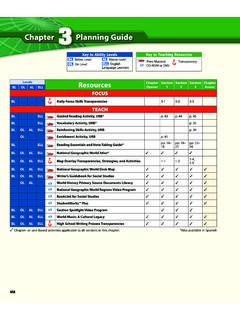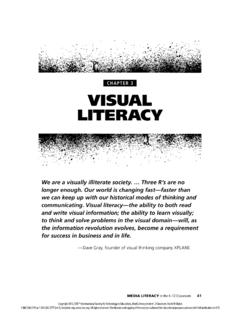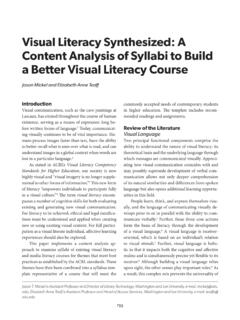Transcription of Chapter Two: Developing Visual Literacy
1 Chapter Two: Developing Visual Literacy Chapter OVERVIEW Words and Images Describing the World Representational, Abstract, and Nonrepresentational Art Form and Content Conventions and Art Iconography Works in Progress Lorna Simpson s The Park The Critical Process Thinking About Visual Literacy : John Taylor s and Howling Wolf s, Treaty Signing at Medicine Lodge Creek Chapter OBJECTIVES This Chapter Will: introduce the student to the interrelationship between words, images and objects in the world examine Lorna Simpson s artwork illustrate ideas of representation in different types of art make the distinction between form and content in art introduce iconography to further students Visual Literacy examine cultural conventions of beauty and reality learn additional terminology used to describe the characteristics of works of art KEY TERMS calligraphy form creativity subject matter content representational abstract
2 Nonrepresentational illusionistic subjectivenonobjective composition naturalistic ethnocentric objective mudra iconography 1 LECTURE AND DISCUSSION TOPICS 1. Words and Images Discuss the differences between words and images using Rene Magritte s The Treason of Images (fig. 16). Point out that Visual Literacy is only attainable if an understanding of language itself is understood. Many times words and our verbal descriptions of objects do not coincide. Illustrate this idea with another Rene Magritte work titled The Interpretation of Dreams, 1930, which presents the viewer with many isolated objects with words under each one.
3 For example, in one section, under an image of a shoe, the word la Lune (French for the moon) is written. Magritte is clearly challenging the viewer to question his or her Visual Literacy , thus posing the paradoxical nature of seeing itself: that sometimes what we see is not always what we see. Ask students to consider the notion that Western culture is visually dependant on mass media such as magazines, television and the Internet, yet we remain visually illiterate. Examine Lorna Simpson s Necklines (fig.)
4 18) and Duane Michal s This Photograph is My Proof (fig. 21) to explore the way images and words function together to create meaning. Show examples from other artists such as John Baldessari, Gilbert and George, or Barbara Kruger, that incorporate words and images to further develop students Visual Literacy . Counterpoint the examples from the Western world with those from the Nonwestern world. With examples of Islamic art and architecture, such as Triumphal Entry (fig. 17) or The Dome of the Rock in Jerusalem, emphasize the importance of words over images in the Muslim world.
5 Provide students with a brief overview of the Islamic religion and the symbolic significance of calligraphy as their primary form of art. 2. Types of Art Representational Art Show examples of a wide variety of representational art including illusionistic, figurative, and naturalistic. Emphasize the similarities in all the types of representational art: recognizable imagery. Representational art depicts the appearance of things. Objects in the everyday world are re-presented for the viewer. Distinguish between Naturalism and Realism as referring to specific types of representational art which conforms very closely to the appearance of objects, and Illusionism (or trompe l oeil [fool-the-eye]) works of art are sometimes indistinguishable from those objects in everyday world.
6 3. Abstract Art Define abstract art by defining the word abstract. As a verb, abstract means to take from, to extract the essence of a thing or idea. As a noun, the word abstract refers to a summary of a longer text. Provide the following analogy for students; when an unknown writer, for example, submits their 1,500-page novel to a publisher for possible publication, the publisher usually wants to see an abstract, or a summary of the work that emphasizes the main ideas of the book. Relate these two definitions to examples from the text.
7 Point out that some artists, such as Marisol Escobar, simplify/abstract the features of her Baby Girl (fig. 23) and exaggerate size in order to emphasize the emotional presence of this rather monstrous baby. Many artists interested in abstraction are not conforming closely to the appearance of the objects in the world but are emphasizing or revealing certain qualities not otherwise apparent to the viewer. 2 4. Nonrepresentational Art Illustrate nonrepresentational or nonobjective art by similarly dissecting the words themselves.
8 A nonrepresentational artwork has no representation to the world of images. There is no object that is readily familiar, but the aim of the artist is to represent an idea that transcends the real world. Using Malevich s Suprematist Painting, Black Rectangle, Blue Triangle (fig. 26), explain how nonrepresentational imagery such as Malevich s colored geometry can evoke ideas and emotions. 5. Form and Content Form is what we see; content is the interpretation of what we see. In relation to art works, the two terms are inseparable since form determines content.
9 Using examples in the Chapter illustrate that in a nonobjective work of art, like Malevich s Suprematist Painting, Black Rectangle, Blue Triangle (fig. 26), form is the content. Other artists, such as Piet Mondrian have similarly arrived at a nonobjective type of art that considers formal elements of shape, color, and spatial properties of the composition as the primary content. To illustrate that Malevich and Mondrian did not begin their artistic career painting nonobjective artworks, show early representational works by both artists and continue with their experiments in abstraction to arrive at their more familiar mature style.
10 A comparison of works with the same subject matter can illustrate form, content and how form determines content; as form changes, so does content. A good example of this is Auguste Rodin s and Constantine Brancusi s The Kiss. Where Rodin s sculpture represents a more realistic kiss, Brancusi s is abstract. Consequently, the more naturalistic/figurative, representational kiss evokes a more passionate emotional content whereas Brancusi s geometric, simplified form renders a more informal or impersonal, childlike idea of a kiss.

